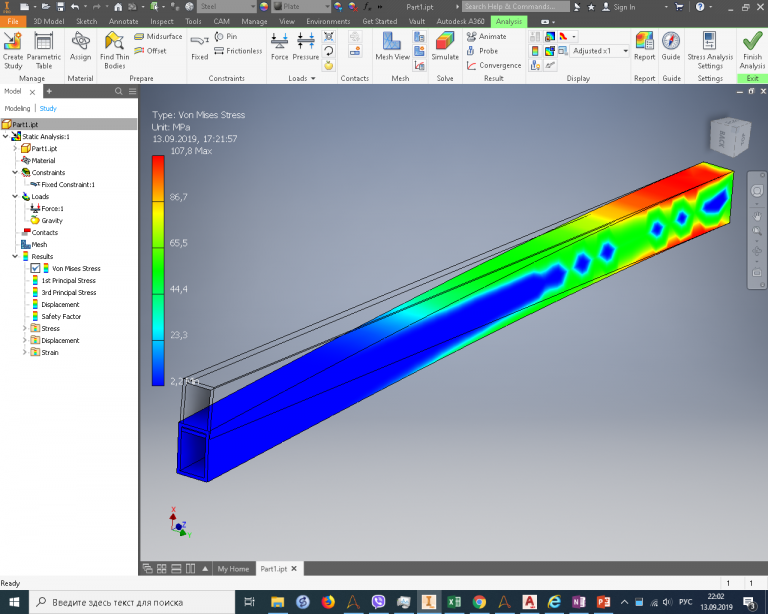The use of piezoelectric stethoscopes for the detection of acoustic events during the Great Patriotic War
Piezoelectric effect (from Greek πιέζω (piezō) – I press, squeeze) – the effect of the occurrence dielectric polarization under the action of mechanical stresses (direct piezoelectric effect). There is also reverse piezoelectric effect – the occurrence of mechanical deformations under the action electric field.
The first devices using the effect of piezoelectricity were seismographs to detect vibrations of the earth’s crust, noise direction finders and sonars to determine surface and underwater targets, and quartz oscillators to stabilize radio frequencies.
Now, without devices using the piezoelectric effect, it is difficult to imagine modern technology – smartphone microphones, electronic resonators for microelectronics (all electronic equipment uses), piezo lighters, pulse and pressure meters, ultrasonic devices in medicine and many others.
On July 27, 1937 in Moscow, on the basis of Trust-13 of the People’s Commissariat of the Radio Industry, the TsNIL (Central Research Laboratory) was organized. A.V. Shubnikov (one of the teachers of the Crystallography Laboratory of the Academy of Sciences) was appointed to lead the Central Scientific Research Laboratory. The task of the Central Scientific Research Laboratory was to study crystalline raw materials, develop methods for their use and processing.
During the Great Patriotic War, on the basis of the Central Research Laboratory, military factories 633 (Moscow – an understudy of the plant in evacuation were organized in Tashkent) and 616 (Omsk) were organized. They produced equipment for hydroacoustics, microphones, pickups, loudspeakers.
In August 1941, the TsNIL received an urgent order for the creation of a device for the detection of delayed-action bombs using a clock mechanism for delayed detonation.
In particular, the German high-explosive bomb SC-1000 could, among other things, be equipped with a fuse with a clock mechanism, allowing the bomb to explode more than 2 hours after penetrating a building or ground. Such bombs were very dangerous in urban areas, since the damage radius of such bombs was more than 120 meters. People, after the end of the air raid alarm, returned to their homes and then more than 600 kilograms of explosive surrounded by 10 millimeters of steel were detonated.
The piezoelectronic stethoscope of the Shein system (PSSH-1) was created literally in a matter of days by a team of scientists led by A.S. Shein. The device made it possible to detect the clock mechanism of an air bomb at a depth of more than 10 meters.
Using this device, bombs were detected and neutralized on Gorky (Tverskaya) Street, in the Zaryadye area and other places.
PSSh-1 devices were produced by plant 633 in 1942-1943.
The development of the direction was the PSH-633 delayed-action mine detection device, which was used for reconnaissance of explosive devices planted on walls and masonry, equipped with a J-Feder-504 delayed action fuse and the like.
When reconnaissance of delayed action mines in soils (on highways and railways, in the basements of buildings), the device had to be used in combination with a depth probe or a sapper’s drill.
The sensitivity of the device is characterized by the following data: the device detects a J-Feder-504 clock contactor immured in a niche in brickwork two bricks thick. In this case, the contactor can lie on a stand made of one brick and a layer of sponge rubber or felt 5-7 mm thick.
The course of the contactor is heard within a radius of 1-1.5 m from the place of its installation.
Parts of the device PSSH-633:
1 – piezoelectric probe; 2 – armored cable; 3 – low frequency amplifier; 4 – metal screen; 5 – electromagnetic telephones; 6 – element 3C; 7 – BAS battery; 8 – spare element 3C; 9 – switch
The piezoelectric probe 1 is a round carbolite box, inside of which a piezoelectric plate is mounted. The conclusions from the metal plates adjacent to the plate, using a flexible armored cable 2, are connected to the input terminals of the amplifier.
The low frequency amplifier 3 is mounted on a round panel. It has three amplification stages, assembled on two SO-243 and 2K2M lamps.
The purpose of the screen is to protect the tubes and amplifier mounting from mechanical damage, as well as electrical interference.
The piezoelectric telephone is mounted in a helmet and is supplied with a soft headband. Separate devices, as shown in the figure, are equipped with electromagnetic telephones 5.
The 3C 6 element and the BAS-60 7 battery are used as power sources. The second 3C 8 element is a spare.
Switching the power supply on and off is done using switch 9.
The principle of operation of the device is based on the following: mechanical vibrations that occur in the examined part of the building due to the movement of the clock mechanism of the contactor act on the piezoelectric plate of the probe, causing its deformation, the value of which changes in time with the movement of the clock mechanism. A piezoelectric plate has the property that, when deformed, electric charges are released on its faces, as a result of which a voltage is formed between the terminals of the metal plates located on these faces, which is applied to the input of the amplifier, amplified by the latter and is heard in telephones, like a clockwork.
The circuit diagram of the PSH-633 device is shown in fig. 3.
The voltage from the piezo probe is applied to the input (grid-cathode) of the first stage of the amplifier. The first two amplifier stages are assembled on a CO-243 double triode and are ordinary low-frequency transformer amplifiers.
The modern development of piezoelectric stethoscope technologies is the use of various acoustic leak detectors and acoustic event detection devices.
Acoustic leak detectors detect sound waves that are generated in the places of ruptures in pipelines and collectors.
Another example of the application of the piezoelectric effect – the detection of acoustic events of the approach of trains is carried out by the “Signalizator-P” device. The acoustic events of the sound of the wheels of an approaching train propagate better in the metal of the rail than in the air, especially in acoustically complicated station environments.
Artificial intelligence technologies make acoustic event detection solutions even smarter and more accessible for use in industry, medicine, transport, and education.
Sources:
Mostyaev V.A., Pozdnyakov P.G. Russian piezo-acoustoelectronics, “Radio engineering”, 2008




